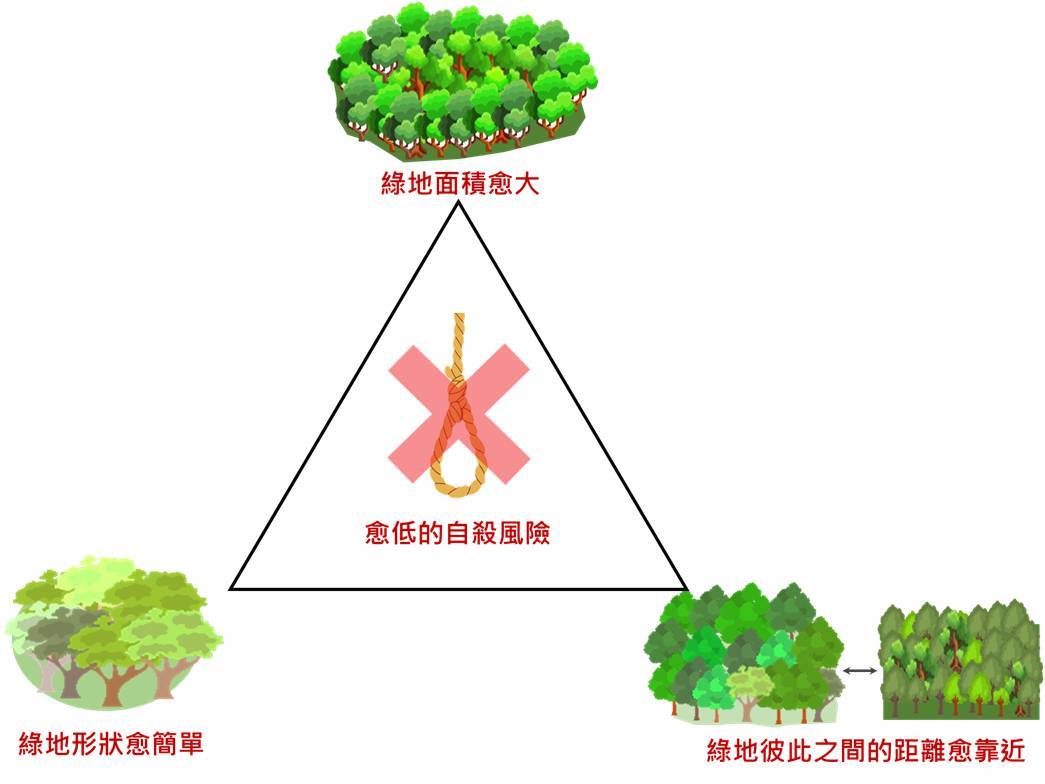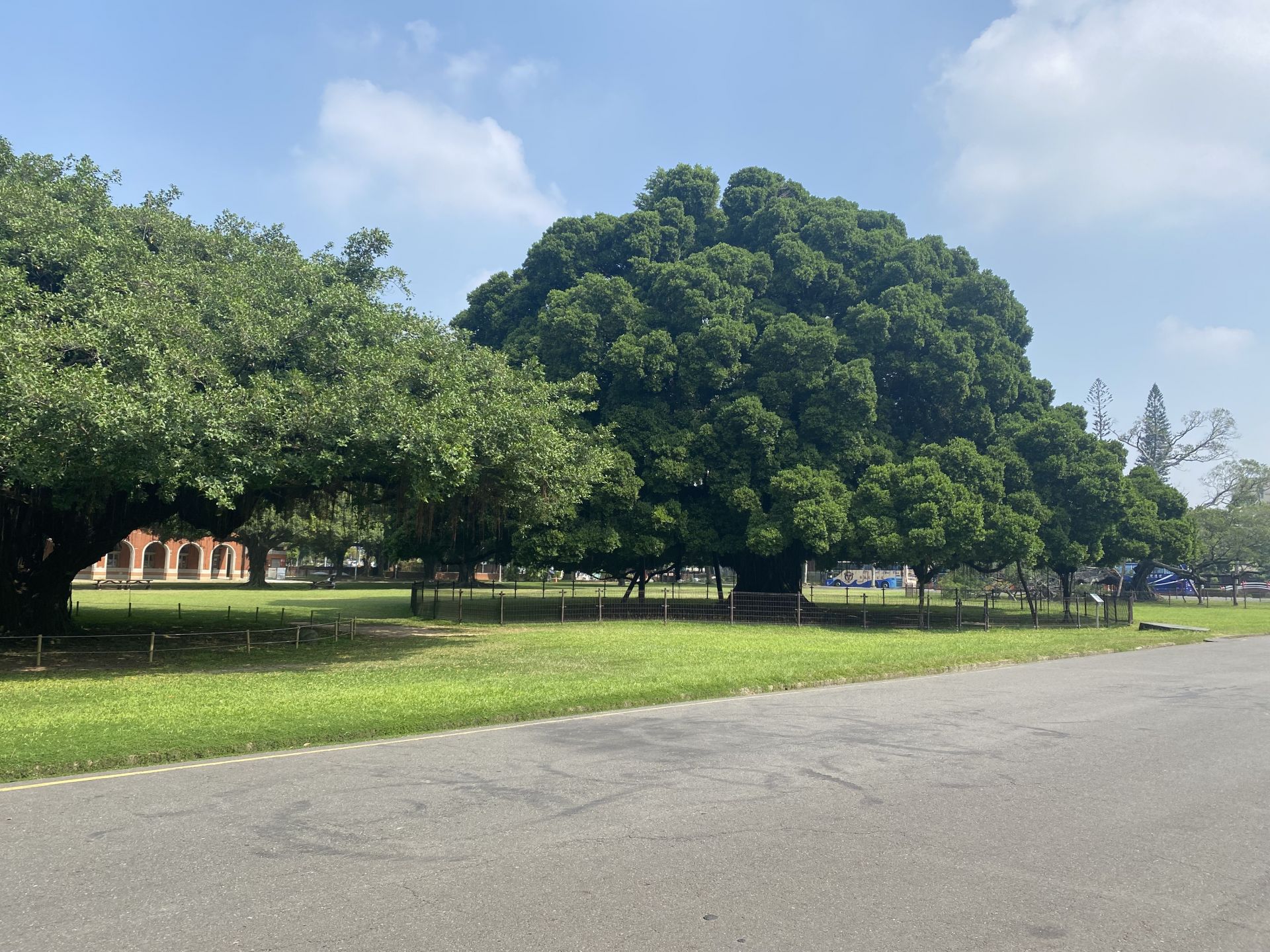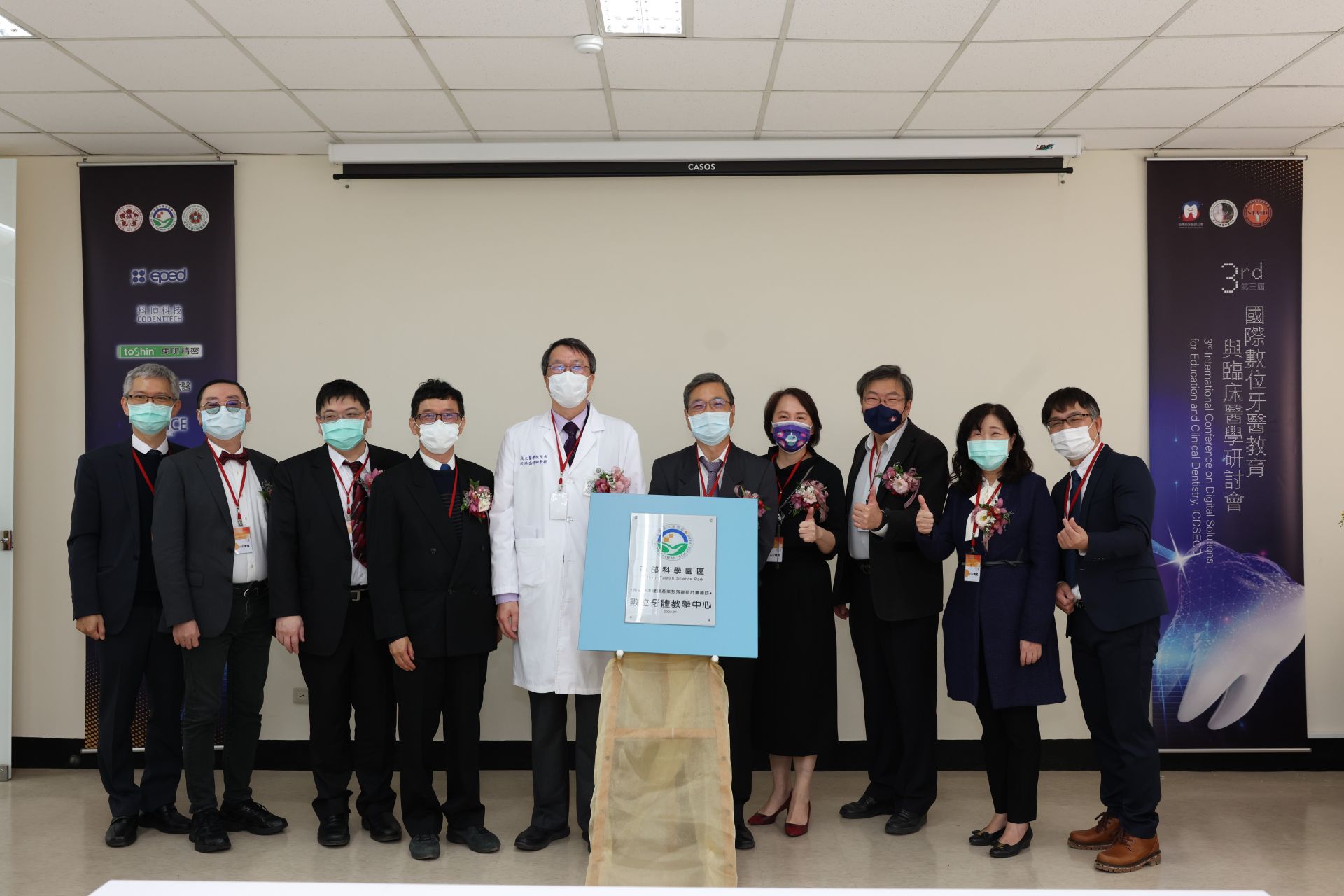NCKU Geomatics team led by Prof. Chih-Da Wu finds multiple green spaces cut suicide rates, in top global journal.
Professor Chih-Da, Wu mentioned that the study not only confirmed the close association between green spaces and suicide rates but also revealed that larger and more regularly shaped green spaces, as well as shorter distances between two green spaces, contribute to reducing suicide rates. In urban areas where large green spaces are scarce, the presence of small interconnected green spaces forming green corridors can significantly enhance residents' mental well-being, providing valuable insights for urban planning.
This large-scale study involves experts from various fields including geospatial information, public health, forestry, and statistics. Participants include Professor Chih-Ta Wu from the Department of Geomatics at NCKU,Postdoctoral Researcher Hao-Ting Zhang, Assistant Professor Xiao-Yun Li from the Department of Leisure Industry and Health Promotion at National Taipei University of Nursing and Health Sciences, doctoral student Samuel Herianto from the Department of Chemistry at National Taiwan University, Associate Research Fellow and Attending Physician Qi-Xin Wu from the Center for Geriatrics and Gerontology Research at the National Institutes of Health, Professor Wan-Yu Liu from the Department of Forestry at National Chung Hsing University, Professor Chia-Pin Yu from the Department of Forestry and Resource Conservation at National Taiwan University, and Associate Professor Wen-Ji Pan from the Institute of Environmental and Occupational Health Sciences at National Yang Ming Chiao Tung University.
The study, supported by the National Science and Technology Commission, the Environmental Protection Administration, and the Ministry of Education's Higher Education Deep Plowing Project, corrected for various factors that could influence suicide rates, such as age, gender, economic status, education level, and urbanization. The corrected statistical results showed that larger green spaces, simpler shapes for green space borders, and shorter distances or interconnectedness between two green spaces have a significant effect in reducing the suicide risk for different towns and townships. On average, a 1% increase in green space area corresponds to a 0.2% decrease in the suicide rate. For instance, in an area with a 10-year suicide death toll of 1000 people, a 1% increase in green space could reduce the number of deaths to 998.
Professor Chih-Da, Wu emphasized that while green space quantity is one of the influencing factors on suicide rates, various other factors, such as age, gender, economic conditions, education, and urbanization, should be considered. The study focused on the quantity, shape, and distribution of green spaces, using statistical methods to adjust for other potential influencing factors.
Dr. Qi-Xin Wu pointed out that green spaces can alleviate stress, increase social interaction, and help individuals relax emotionally, contributing to a reduction in negative emotions and a lower risk of mental illness, thus enhancing overall mental health. Additionally, the positive effects of green spaces on physical health indirectly reduce the risk of suicide.
Assistant Professor Hsiao-Yun Lee highlighted that the study provides evidence of the association between green space quantity and suicide rates, although causation is not absolute. The study also suggested that larger green spaces, by attracting more people and increasing social interaction, have a positive impact on mental health. In contrast, fragmented small green spaces may not be as attractive, and the lack of accessibility and safety may discourage people from utilizing them. However, if small green spaces can be connected to form green corridors, allowing people to stroll along them, it would still have positive effects on relaxation.
Research Fellow Chang Hao-Ting mentioned that some previous studies indicated higher suicide rates in rural areas compared to urban areas, but rural residents often have more green space. Therefore, adjusting for different factors affecting suicide rates becomes essential.
The research involved interdisciplinary collaboration, including experts from the Department of Geomatics at NCKU, the Department of Recreation, Health Promotion and Recreation at National Taipei University of Nursing and Health Sciences, the Department of Chemistry at National Taiwan University, the Aging and Health Research Center at the National Institute of Environmental Health Sciences, a specially appointed professor in the Department of Forestry at National Chung Hsing University, a professor in the Department of Forestry, College of Bioresources and Agriculture at National Taiwan University, and an associate professor in the Institute of Environmental and Occupational Health Sciences at National Yang Ming Chiao Tung University.
he study utilized health insurance data from 2000 to 2018, encompassing suicide data for 368 towns and townships across Taiwan. Geographic information systems (GIS) and satellite data were employed to obtain the quantity of green spaces in each town and township, with a focus on parks and school grounds. The study applied the Fragstats program to quantify the structure of green spaces, considering factors such as size, shape, and connectivity between green spaces.
The study was supported by the National Science and Technology Commission, the Environmental Protection Administration, and the Ministry of Education's Higher Education Deep Plowing Project. The research results were published in the "Landscape and Urban Planning" journal, which holds the top global ranking in the field of urban studies.
Dr. Qi-Xin Wu emphasized that the association between green spaces and mental health is a well-researched topic internationally. However, Taiwan's advantage lies in its comprehensive health insurance database, allowing large-scale research with nationwide coverage—a unique aspect compared to many foreign studies.
Assistant Professor Hsiao-Yun Lee pointed out that most overseas studies on green spaces primarily use coverage rates or analyze different types of green spaces (such as forests or parks). Few studies use shape and structure indices for analysis.
Specially Appointed Professor Wan-Yu Liao from the Department of Forestry emphasized the importance of nature-based solutions, including natural carbon sinks, increased vegetation, and expanded forest areas, to combat climate change. Beautifying urban areas with greenery is considered one of the natural solutions. Meanwhile, the growing importance of forest therapy is evident, with the Forestry Bureau actively training forest therapy instructors and certifying suitable venues for forest therapy. Assistant Professor Hsiao-Yun Lee reminded that the accessibility of some forest recreation areas is inadequate, making it difficult for many people to approach, an aspect that future forest therapy development should address.

Professor Chih-Da, Wu (scopus) from the Department of Surveying Engineering at NCKU collaborated with experts from various fields to conduct research on the relationship between green spaces and suicide. In the image, Professor Chih-Da, Wu is pictured, and on the computer screen, from left to right, are Professor Wan-Yu Liu, a specially appointed professor in the Department of Forestry at National Chung Hsing University, and Assistant Professor Hsiao-Yun Li from the Department of Leisure Industry and Health Promotion at Taipei Nursing University.

Professor Chih-Da, Wu's team from the Department of Surveying Engineering at NCKU conducted research on the relationship between green spaces and suicide rates. They found that larger and more regularly shaped green spaces, as well as shorter distances between two green spaces, are helpful in reducing suicide rates.

The research conducted by Professor Chih-Da, Wu's team on the relationship between green spaces and suicide rates was published in the top-ranked journal in the field of global urban studies. The image shows the famous Banyan Garden at NCKU, which often attracts many people to its vicinity.






















